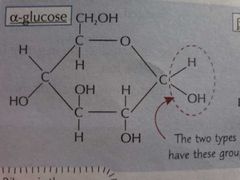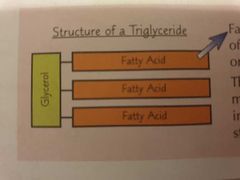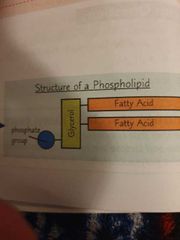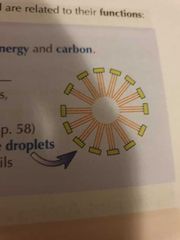![]()
![]()
![]()
Use LEFT and RIGHT arrow keys to navigate between flashcards;
Use UP and DOWN arrow keys to flip the card;
H to show hint;
A reads text to speech;
60 Cards in this Set
- Front
- Back
- 3rd side (hint)
|
What does the plasmodesmata do? |
Connects the cytoplasm of cells to each other |
|
|
|
What does the cell wall do? |
•Supports the plant cells •Give the cell shape•Supports the plant cells•Protect the contents of the cell from invading pathogens •Supports the plant cells•Protect the contents of the cell from invading pathogens •Protect the contents of the cell from invading pathogens •Protect the contents of the cell from invading pathogens
|
|
|
|
What does the nucleus do? |
•Controls the cell's activities •Contains coded genetic instructions to make proteins |
|
|
|
What does the lysosome do? |
•Contains digestive enzymes/hydrolytic enzymes •breaks down waste,old organelles,and pathogens •Plays a role in apoptosis or cell death |
|
|
|
What are ribosomes? |
Where proteins are made |
|
|
|
What does the rough endoplasmic reticulum do? |
•Synthesis and transport of proteins •{ribosomes bound to the surface} |
|
|
|
What does the Smooth endoplasmic reticulum do? |
Synthesises and processes lipids and carbohydrates |
|
|
|
What does the golgi apparatus do? |
Modifies and packages proteins |
|
|
|
What are calcium ions for? |
•Nerve impulse transmission •Muscle contraction |
|
|
|
What are sodium ions for? |
• Nerve impulse transmission • Kidney function |
|
|
|
What are potassium ions for? |
• Nerve impulse transmission • stomatal opening |
|
|
|
What are hydrogen ions for? |
• Catalysis of reactions • pH determination |
|
|
|
What are ammonium ions for? |
• Production of nitrate ions by bacteria |
|
|
|
How does the production of proteins occur? |
1) proteins are made at ribosomes. 2) ribosomes on the ER get excreted, free ribosomes stay in cytoplasm. 3) New proteins produced in the ER are folded and processed. 4) Transported to the Golgi apparatus. 5) modified and packaged. 6) goes to vesicles to be transported around the cell/excreted. |
|
|
|
What does the cytoskeleton do? |
1) microtubules and microfilaments =support the cell's organelles and keeps them in position.
2) Strengthen the cell and maintain its shape.
3) movement of materials within the cells.
4) Can cause cell to move (flagella) |
|
|
|
What stains can be used to stain samples for light microscopes? |
•Methylene blue •eosin |
|
|
|
What are carbohydrates made from? |
Monosaccharides |
|
|
|
What is the structure of alpha glucose? |

|
|
|
|
What bonds join monosaccharides together? |
Glycosidic bonds. |
|
|
|
What 3 polysaccharides do I need to know? |
• Starch • Glycogen • Cellulose |
|
|
|
What makes up starch? |
Amylose and Amylopectin |
|
|
|
Amylose structure and function? |
• Long, unbranched. • Coiled = compact = good for storage. |
|
|
|
Structure and function of amylopectin? |
• Long, branched • side branches allow the enzymes to break down = releases glucose quickly. |
|
|
|
Structure and function of glycogen? |
• Excess glucose stored as glycogen. • loads of branches = release glucose quickly. • compact= storage |
|
|
|
Structure and functions of cellulose? |
• Long, unbranched chains of beta glucose. • straight chains. • linked together by hydrogen bonds = microfibrils= structural support. |
|
|
|
What is the structure of triglycerides? |

Held together by ester bonds |
|
|
|
What does a saturated fatty acid mean? |
No C=C bonds |
|
|
|
What does an unsaturated fatty acid mean? |
Contain C=C bond |
|
|
|
What is the structure of phospholipids? |

|
|
|
|
What is the structure and function of triglycerides? |

• energy storage molecules. • tails contain chemical energy • insoluble |
|
|
|
Function of cholesterol? |
Binds to the tails causing them to pack more closely together. This makes the membrane less fluid and more rigid |
|
|
|
What bonds are formed when Amino acids join together? |
peptide bonds |
|
|
|
What is the structure of an amino acid? |
• Variable group • Amino group • Carboxyl group |
|
|
|
What is the primary structure of a protein? |
Sequence of amino acids |
|
|
|
What is the secondary structure of proteins? |
Hydrogen binds form: alpha helix/beta pleated |
|
|
|
What is the tertiary structure of proteins? |
Coiled further. More bonds. 3D. |
|
|
|
What is the quaternary structure of proteins? |
Several different polypeptides chains. |
|
|
|
What bonds hold primary structure? |
Peptide bonds |
|
|
|
What bonds hold secondary structure? |
Hydrogen bonds |
|
|
|
What bonds hold tertiary structure? |
• Disulphide • Ionic • Hydrogen • hydrophyllic and hydrophobic |
|
|
|
What are conjugated proteins? |
Globular proteins with a non protein called a prosthetic group. |
|
|
|
Examples of conjugate proteins? |
Haemoglobin |
|
|
|
What are fibrous proteins? |
• Insoluble • Strong |
|
|
|
Example of fibrous proteins? |
Keratin,collagen, elastin |
|
|
|
What are the properties of keratin? |
• Hair, skin, nails • Flexible • hard and strong |
|
|
|
What is the structure and function of globular proteins? |
• Hydrophyllic on the outside • soluble • spherical |
|
|
|
What are conjugated proteins? |
Globular proteins with |
|
|
|
What are the properties of collagen? |
• Found in connective tissues • 3 polypeptides • strong • flexible |
Fibrous |
|
|
What are the properties of elastin? |
• Found in elastic connective tissues such as skin, blood vessels etc • allows it to return to normal size after it has been stretched. |
|
|
|
What are the properties of keratin? |
• Hair, skin, nails • flexibility determined by the amt of disulphide bonds |
|
|
|
Explain how to test for reducing sugars? |
Benedicts. 1) add benedicts (blue) 2) heat in water bath 3) reducing sugar= coloured precipitate 4) Red has a lot of reducing sugar |
|
|
|
Explain how you would test for non reducing sugars? |
If reducing sugar is negative... 1)get a new sample 2)Add HCL and heat it in water bath- 3)boil 4)neutralise it with sodium hydrogencarbonate 5) do benedicts again |
|
|
|
What is the test for starch |
Iodine (Brown-blueblack) |
|
|
|
What is the test for proteins? |
Biuret (Blue-purple) 1) add NaOH 2) add copper sulphate |
|
|
|
What is the test for lipids? |
Emulsion 1) add ethanol 2) if cloudy =positive |
|
|
|
What does colorimetry do? |
Determines conc of glucose. |
|
|
|
How do u calibrate a colorimeter? |
Using distilled water |
|
|
|
What are biosensers used for? |
•A device that uses a biological molecule such as an enzyme to detect a chemical. •The molecule produces a signal ->electric signal by a transducer |
|
|
|
What things should u remember to do In a chromatography experiment? |
Draw in pencil Put lid Fume cupboard (chemicals) Hold paper or whatever with a clamp Repeat,calc mean, exclude anomalies
|
|
|
|
How do u calculate R.F value? |
Distance travelled by solvent÷ distance travelled by liquid. Measure from the centre of the spot |
|

